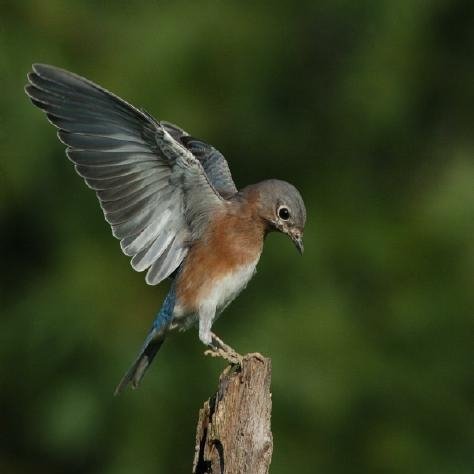A total of 598 Eastern Bluebirds were reported seen in 37 counties in Florida during the Florida Bluebird Society’s Fall Statewide Bluebird Blitz held November 8-9, 2013.
The total number includes sightings reported to the FBS and those listed on E-Bird.
First-time sightings were received from four counties. The counties and number of bluebirds reported were:
Gadsden, 1; Gulf, 3; Hamilton, 3; and Monroe, 1. This was the first fall sighting reported in Putnam County (6).
Five counties reported a record number of sightings. The counties and the number of sightings reported were: Alachua, 55; Charlotte, 13; Collier, 36; Duval, 70; and Seminole, 24. Another two counties — Bay (7) and Citrus (13) reported high Fall sightings.
Duval’s 70 sightings were the highest number reported by any county during this Blitz. The 37 counties are the highest number in which Fall sightings were reported, and second only to the 43 counties in which sightings were reported in the Spring 2013 Blitz.
The 598 sightings were the second highest number reported. In November 2010 a record 611 bluebird sightings were reported. The 598 is 145 more than the 453 reported during the November 2012 Blitz.
The map reveals an interesting pattern of bluebird sightings. The counties in which bluebirds were reported seen are clustered in the upper northeast part of the state, and with the exception of Sarasota, stretch unbroken down the Gulf Coast to Monroe, one of the four counties with first-time sightings. Bluebird sightings were reported in Escambia County — in the western-most part of the Panhandle — and in Nassau County — in the extreme northeast part of Florida — and in Monroe County — in the southernmost tip of the Peninsula. All the FBS needs are bluebird sightings in the Keys to call Florida a “Bluebird State.”
The Florida Bluebird Society thanks all those individuals who participated in the 2013 Fall Statewide Bluebird Blitz. As more individuals participate in this twice-yearly event, the FBS will begin to get a more complete picture on the health of the species in Florida and how the bluebird population fluctuates at different times of the year.


Very interesting. Hope more folks participate this Fall. We want to see all of Florida lit up with Eastern Bluebird sightings!
I’ve asked friends that visit the Keys to keep their eyes open for blues. Not sure the Keys have the right habitat for bluebirds though. But would certainly be wonderful if they were spotted.